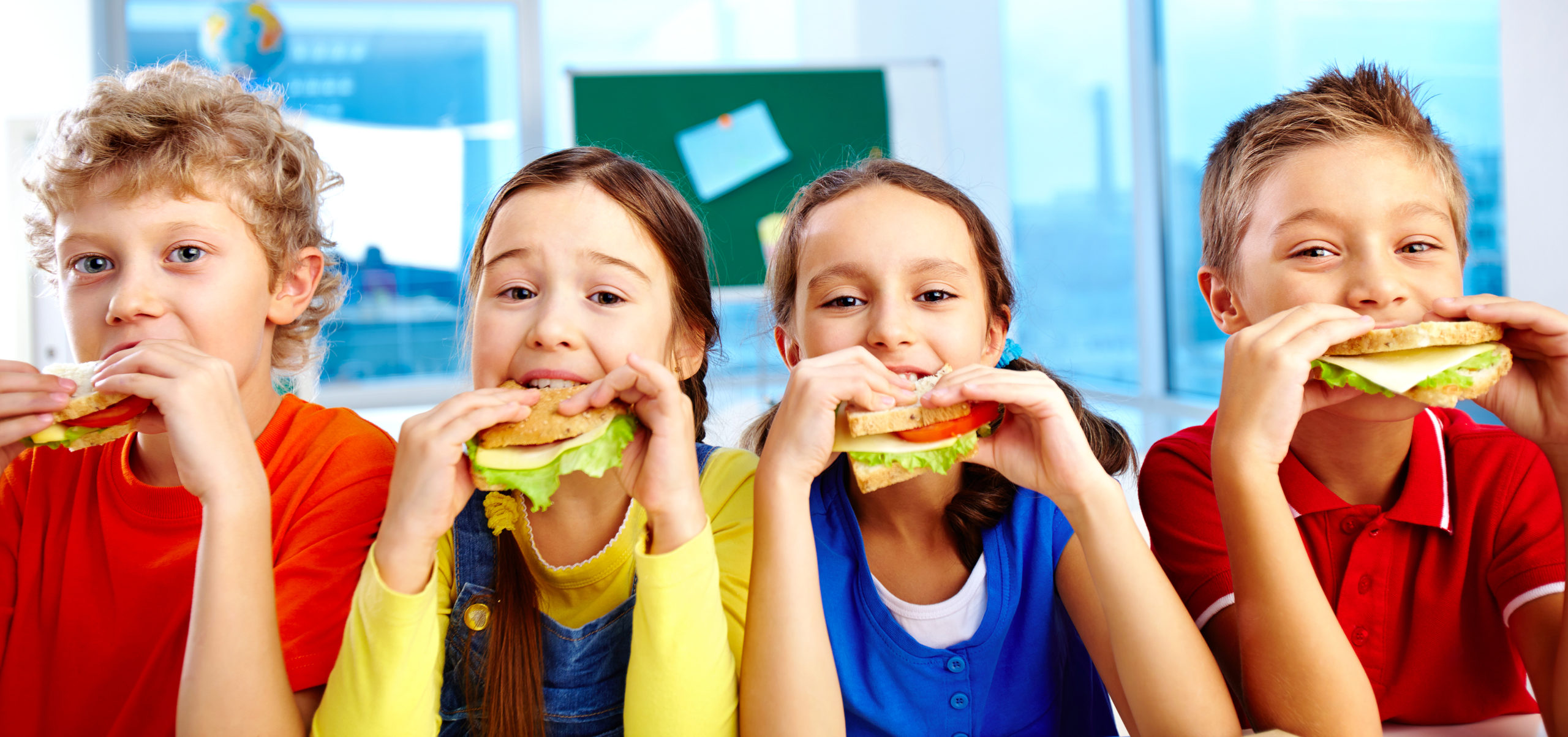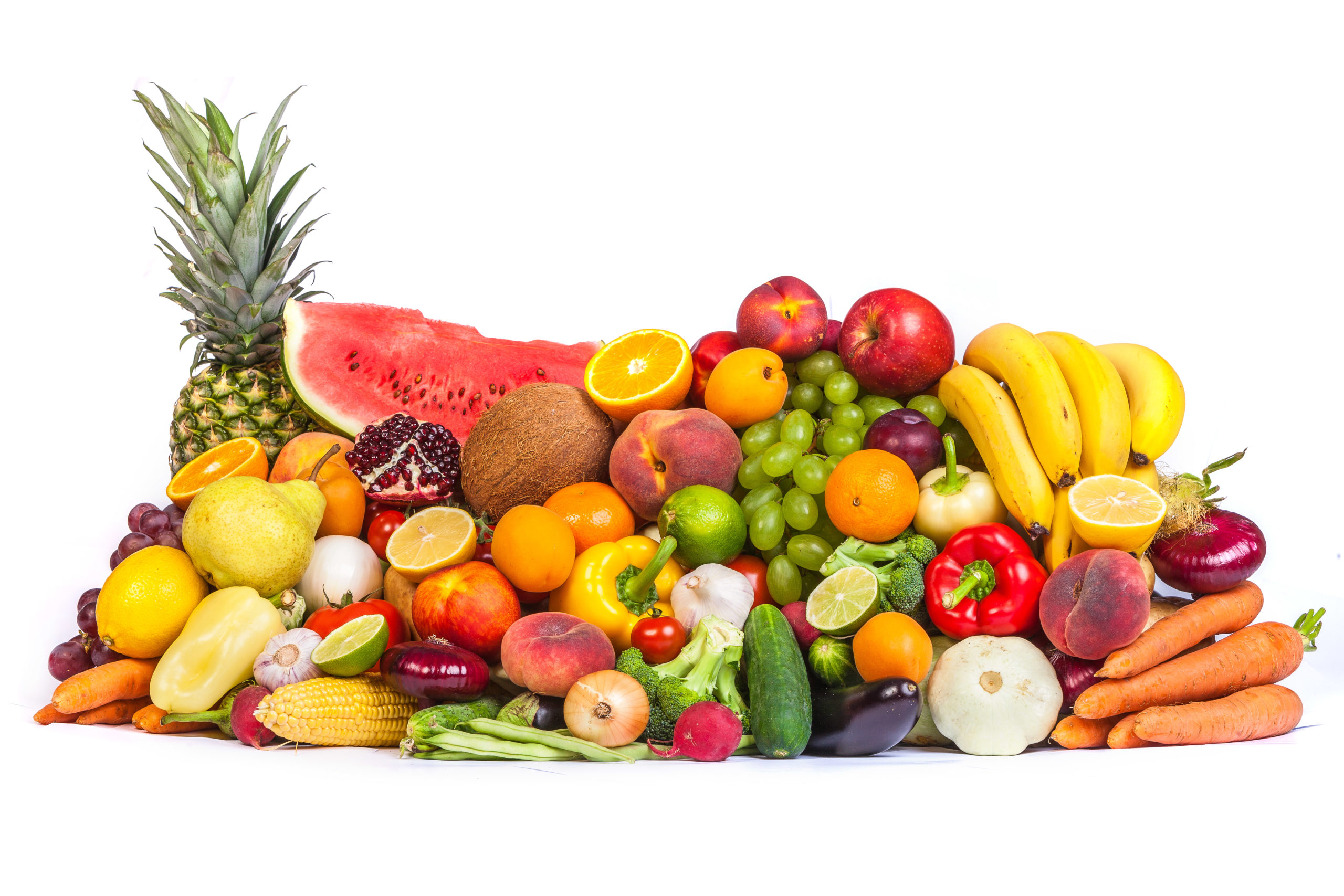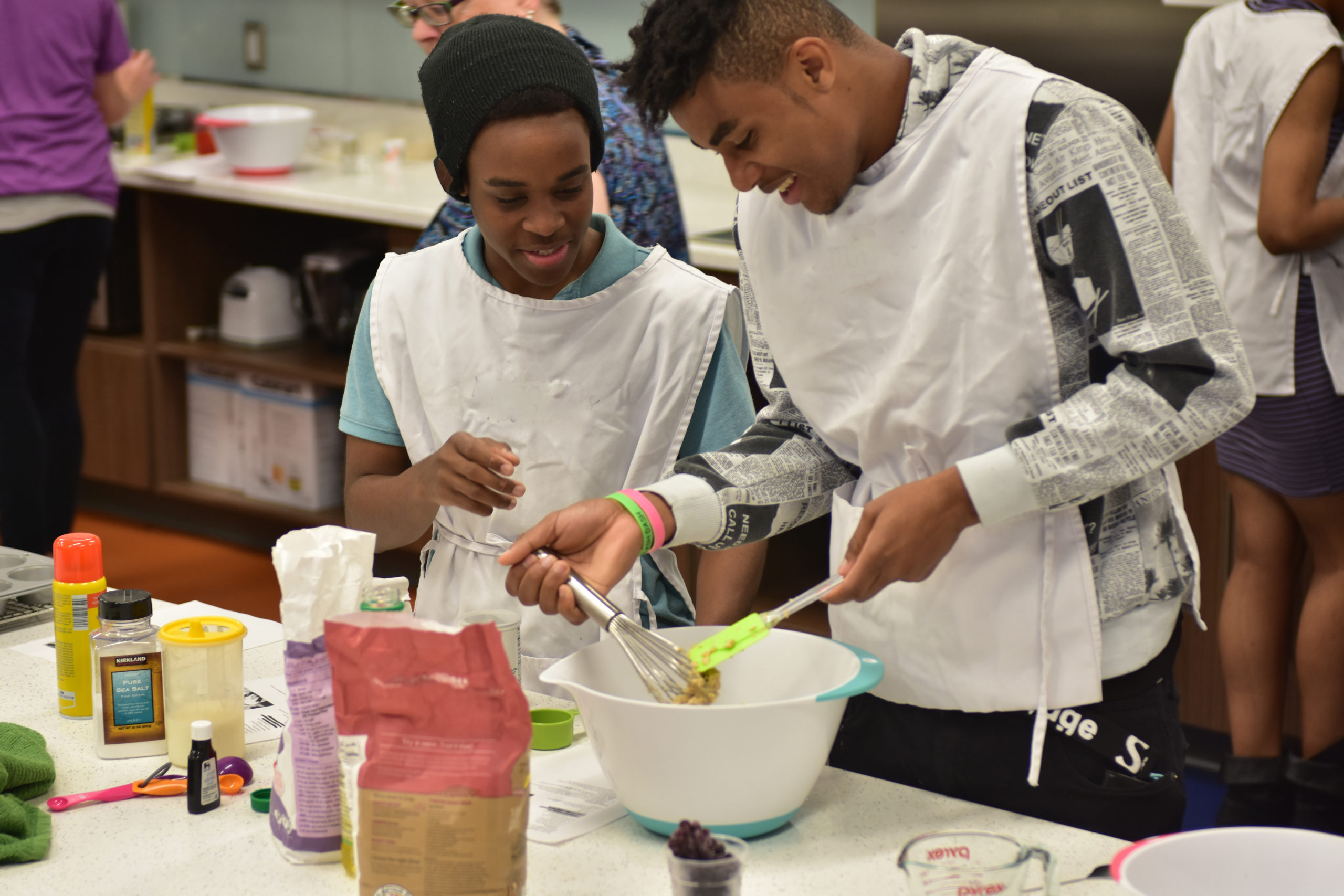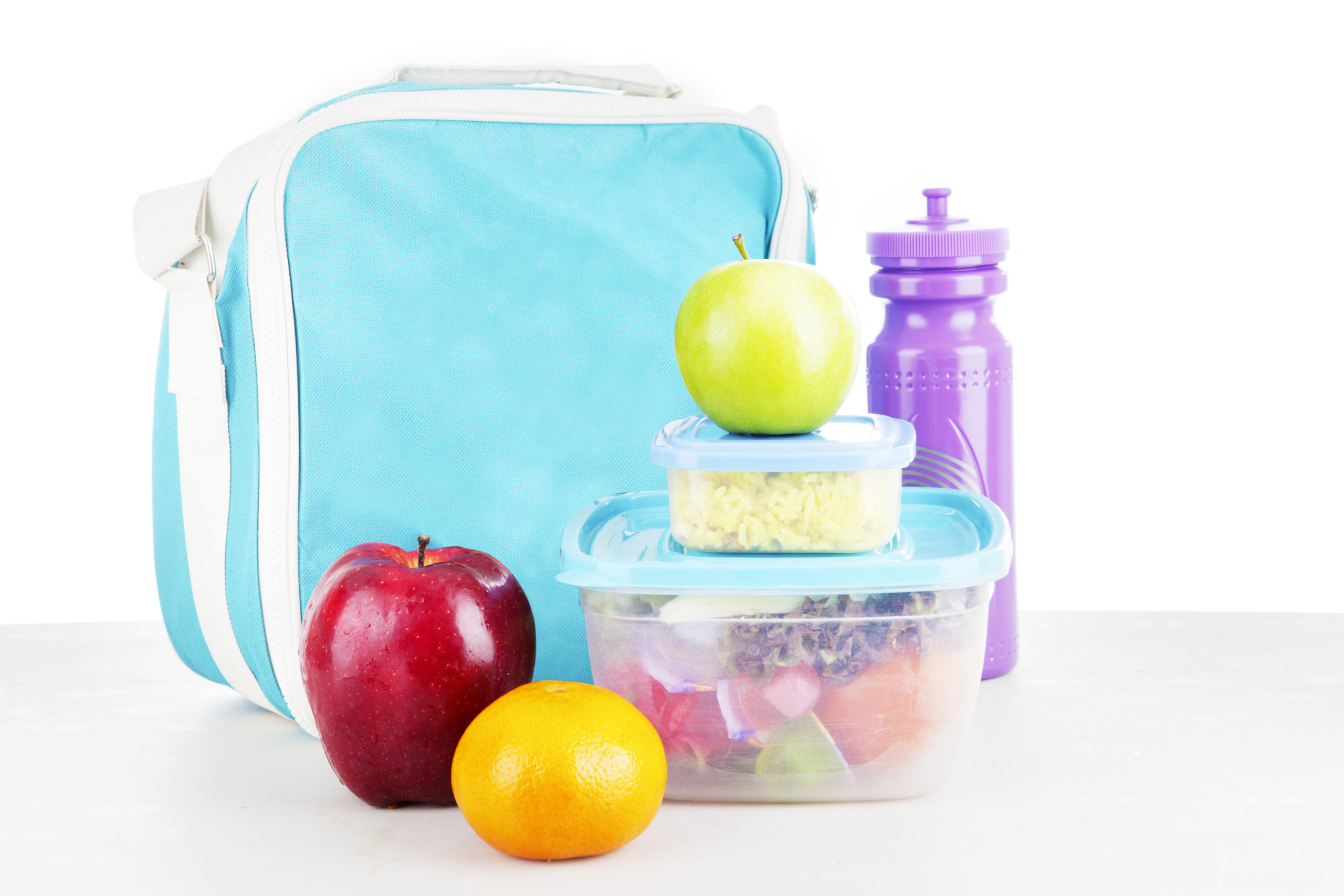
Tips for Healthy School Lunches
Katie Barker, MS, RD
Health Educator
You may be wondering how to make sure your child eats a healthy lunch. Whether they participate in cafeteria lunches or receive packed lunch, both options are a great choice! The foundation of a healthy lunch includes three or more food groups, nutrients to support growth, beneficial beverages, and a variety of foods. By having three or more food groups at lunch, your child will be getting the right balance of protein, fat, carbohydrates, vitamins, and minerals that they need to stay focused during school.
Tips for Packing Lunch:
Here are some examples of packed lunches that contain at least three or more food groups:
- Peanut butter and banana sandwich; bell pepper slices or carrots with hummus.
- Deli meat, cheese, and whole grain wrap roll-ups; applesauce or fruit salad.
- White bean salad with tomatoes, parsley, cheese, and a vinaigrette; orange or apple.
Utilize lunch add-on’s to make packing balanced lunches easier. Lunch add-ons include granola bars, fruit, cheese sticks, trail mix, and even these zucchini muffins.
A tip for packing a healthy lunch is to include beneficial beverages, especially water. Aim to pack whole fruits instead of fruit juices when possible. Your child can get fiber from whole fruits, which will help their energy and mood levels stay sustained throughout the school day. Try flavoring water by infusing it with frozen berries, watermelon, or lemon to encourage your child to drink more water.
Cafeteria Lunches:
If your child participates in cafeteria lunches, you can rest assured that they are receiving multiple food groups with a variety of nutrients. Cafeteria lunches are healthy because they follow special regulations designed to incorporate multiple fruits, vegetables, dairy, protein, and grains. They are required to provide children with at least one third of the Recommended Dietary Allowance for nutrients like calcium, vitamin A, vitamin C, protein, iron, etc. Your cafeteria will be providing designated servings of various colors and types of fruits and vegetables each week. This ensures that your child gets a variety of nutrients and is exposed to many different produce options.
Eating the Rainbow:
It’s a good idea to aim for at least five servings of fruits and vegetables per day. This includes kids! Lunches are a great opportunity for your child to “eat the rainbow.” Try to help your child eat a variety of colors when eating produce because each color represents a different set of nutrients. For example, orange-colored items, like carrots, sweet potatoes, and oranges, contain vitamin A.
To help your child “eat the rainbow” at lunch follow these tips:
- Pack a new fruit each week.
- Pack dried fruit when out of fresh fruit and don’t have time to go to the grocery store.
- Pack vegetables that won’t brown, like cucumbers, carrots, or jicama.
- Incorporate fruits and vegetables for lunches on the weekends to encourage your child to eat them during school days.

Modeling Healthy Food Choices and Curiosity Around Lunches:
It’s important for parents and caregivers to model healthy choices and neutral language around food. Modeling healthy choices means parents or caregivers are willing to try new foods, sitting at the table during family meals when able, and choosing a variety of food groups. Whether you realize it or not, children are learning from you.
Neutral language around food is important to encourage children to have a positive relationship with food. This will help them be willing to try new foods, approach food with curiosity instead of judgment, and develop their own autonomy around food choices. When discussing school lunches, stay neutral. For example, discuss food options without labeling them as “good” or “bad.” Focus on the taste, texture, nutrients within a food, or how it makes you feel instead. Allow your child to explore new foods and tastes without judgment.
You can encourage your child’s autonomy (the ability to make their own decisions) around food choices with these tips:
- If packing lunch, ask for their input on food items they would like in their lunch.
- If having a cafeteria lunch, ask for them to review which foods they liked or did not like, and if they would be willing to try a disliked food a second time.
- Take them to the grocery store and allow them to choose a new produce item to try.
- Include them in the lunch assembly/cooking process.
- Ask them about new foods they tried at the cafeteria.
How to Sign Up For Free Lunch:
If you are interested in applying for free or reduced-priced lunch for your child, you can complete and send an application to your school at any time during the year. To find an application, contact your local school or visit their website.
If your family is already eligible for Supplemental Nutrition Assistance Program (SNAP) benefits, then your child is already eligible for free lunch.
Find more information on applying for free and reduced price school meals.
To find more information about healthy school lunches, you can review resources at MyPlate.gov. There are resources specific to nutrition needs at different ages. This MyPlate Guide for School Lunches highlights the benefits of dairy, protein, whole grains, fruits, and vegetables. School lunches are a great way to support your child’s energy and learning during school. Whether your child receives packed lunch or participates in cafeteria lunch, they can still eat a healthy lunch!
Featured Poe Program: Muffin Mystery
Participants: Ages 11-18
Program Length: 2 hours
Muffin Mystery guides participants through a tasty STEM experiment as they use the scientific method to prepare blueberry muffins. They will learn about different food groups, cooking principles, and analyze the results of their muffin experiment through hands-on learning. Cooking can encourage participants to try new foods, both in school and at home!

Featured Resource: Food Safety for School Lunches
If your child brings a school lunch from home follow these tips to keep food safe:
- Keep perishable meals in the refrigerator until right before your child leaves for school.
- Keep lunch bags away from sunlight and other sources of heat.
- Throw away perishable leftovers and don’t reuse plastic bags.
Find links to more helpful information on our CookWELL Kitchen Resources page.

